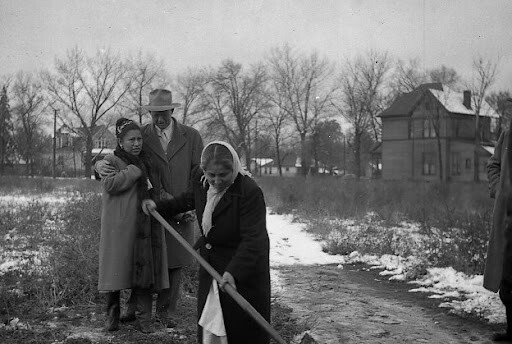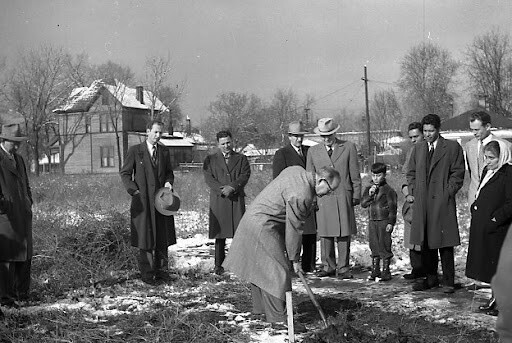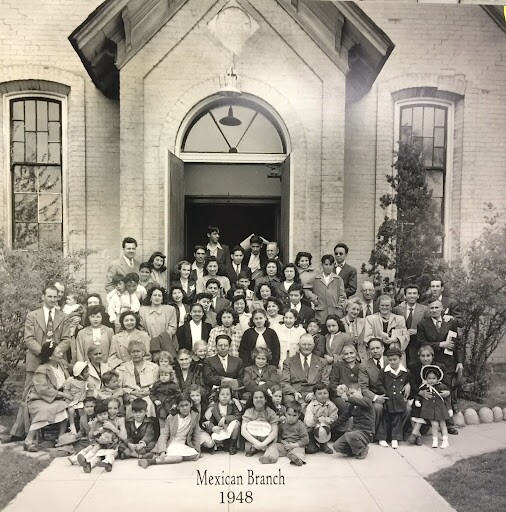As Latter-day Saints prepare to celebrate the 175th anniversary of Pioneer Day on July 24th this year, LDS Living recognizes that in addition to the sacrifices of the early pioneers, there are many modern-day pioneers across the globe who have built the Church in their nations or in their families. In this new series of articles, we wish to recognize these present-day pioneers and remember all who have helped make The Church of Jesus Christ of Latter-day Saints what it is today.
Editor's note: The author would also like to acknowledge two major contributors to this story: The descendants of Agustina Rivera-Torres, Caroline Ramirez (Cabrera) and Mark McCune. The photos included in this article are from a public FamilySearch tree and uploaded by Orlando Andre Torres.
The Rivera family enjoyed singing hymns at the local presbyterian congression in their hometown of Chimal, Mexico. When Latter-day Saint missionaries arrived, the family was drawn to the beautiful hymns they sang. The invitation to join in the singing led to the conversion of the daughters and their mother in the fall of 1906. As the Mexican Revolution intensified, the family was forced to find refuge in the United States. In June 1918, the three sisters, with the help of members in El Paso, Texas, were able to travel up to Salt Lake City, Utah.

Although forcefully separated from their parents, older siblings, and ancestral land, their faith in the Savior and in His restored gospel, fueled their desire to build up Zion. No task was too great for these hermanas. Upon arriving in Salt Lake City, they rolled up their sleeves and got to work! When they were not working in the homes of European American families, they were caring for the poor and needy and sharing the gospel. It was fitting that they were called as local Spanish-speaking missionaries. While serving, they met their husbands who, shortly after being converted, helped to form what they called the Mexican Branch (the 1st Spanish-speaking branch). Two years later and all within a month, the three sisters were sealed to their spouses in the Salt Lake City Temple.

The first Spanish branch was organized in 1923 with Agustina as the first Relief Society president, Dolores as the first counselor and Domitila as secretary. Through the years, they, along with their spouses and branch members, served in various capacities while uplifting their families and communities.
During Dolores (Lola’s) service as Relief Society president, the Church and saints began to take notice of her extraordinary efforts and faith to build up Zion. Betty Ventura summarized it well in her book, The History of the Salt Lake Mexican Branch:
In 1946, President George Albert Smith announced in general conference that a new Administration Building was to be built for the Relief Society, and asked that every sister in the Church contribute $5.00 towards its construction. Lola was present in that conference. She said that when she heard his words, she thought how difficult it would be for her sisters to fill that assignment, because five dollars in those days was a lot and her sisters were not wealthy. But then came this thought: “If the prophet of the Lord has said it, it must be right and true.” She returned home and immediately made her plans. With the help of her counselors, she organized a Mexican dinner, and the sisters themselves prepared the food and were able to pay the quota asked for by President Smith —five dollars for each sister in the branch. By doing so, the Relief Society of the Salt Lake Mexican Branch became the first unit in the entire Church to fill this assignment. Later, President Belle S. Spafford in the Relief Society general conference recognized Sister Torres’ action. And as a result, she was invited to take part in various programs in the wards, to encourage the American sisters in filling their own quotas. She would appear dressed in her china poblana costume from Mexico, telling of her own experience and bearing testimony of the prophet and of the Church. As Relief Society president, besides carrying out the regular program of the Society, she regularly organized special dinners and programs, at times inviting general board members, and even the Relief Society general president, Sister Spafford. Perhaps she wished to show others the potential that she saw in this little Mexican Branch.

Every single person that surrounded these three extraordinary sisters also carried the same joy and conviction for the restored gospel of Jesus Christ. We find similar and fascinating stories of Saints in many parts of the world who have contributed to the building of Zion. It is true that “by small and simple things are great things brought to pass,” (Alma 37:6). What started as a small branch, where members gathered in parks or wherever possible, eventually resulted in the first Spanish branch in the Salt Lake Valley! Today, there are 50+ Spanish-speaking wards and branches in the state of Utah alone. The contribution of these three sisters and the early saints of the first Spanish branch, continue to be fruitful and have blessed the lives of many.

